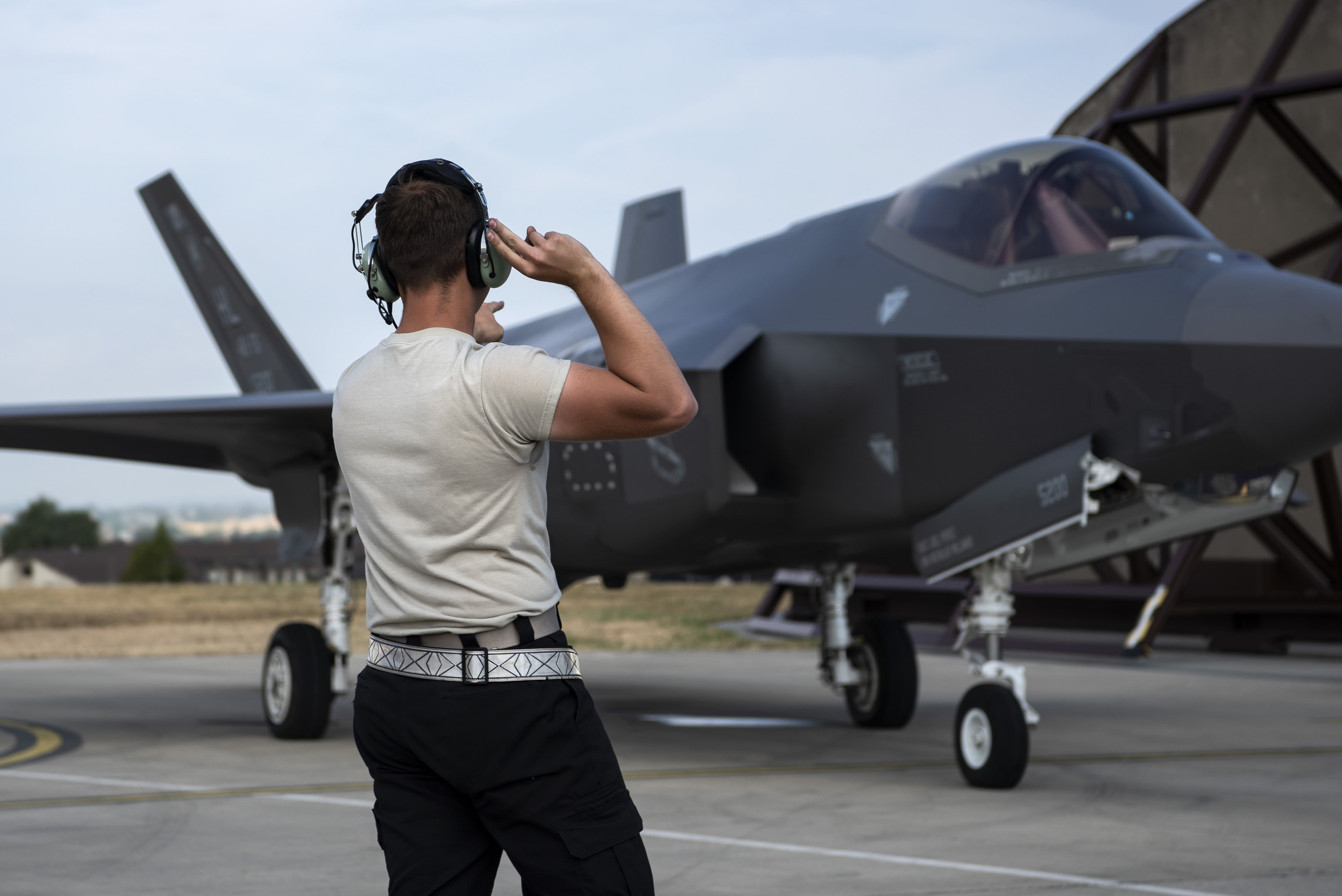U.S. Air Force F-35A Lighting II aircraft, assigned to the 421st Fighter Squadron and F-15E Strike Eagles, assigned to the 4th Fighter Wing,
Seymour Johnson Air Force Base, North Carolina is seen participating in Operation Rapid Forge in the video below.
Rapid Forge aircraft are forward deploying to bases in the territory of NATO allies in order to enhance readiness and improve interoperability.
SPANGDAHLEM AIR BASE, RP, GERMANY
07.18.2019
Video by Airman 1st Class Chanceler Nardone
52nd Fighter Wing Public Affairs
In an article published on July 19, 2019 by Micah Garbarino, 388th Fighter Wing Public Affairs, the role of Hill AFB in Rapid Forge is highlighted:
SPANGDAHLEM AIR BASE, Germany (AFNS) —
Airmen from Hill Air Force Base’s fighter wings forward deployed the F-35A Lightning II to several locations in Europe as part of a joint readiness exercise.
So far, operation Rapid Forge has seen F-35As, F-15E Strike Eagles and C-130J Super Hercules aircraft work together to land, refuel and rearm with inert munitions at forward airfields in Poland and operate out of Lithuania and Estonia in one day.
“Rapid Forge is allowing us to stress test what, up until now, has only been a concept for the F-35A,” said Lt. Col. Maxwell Cover, F-35A pilot and project officer for Rapid Forge.
The goal is to expand the Air Force’s adaptive or agile basing ability, a concept in which aircraft operate from forward, temporary, sometimes contested locations. The ability to land, refuel and rearm at forward airfields gives commanders more flexibility to strike and limits enemies’ ability to target a stationary force.
For the 388th Fighter Wing, the Air Force’s first operational F-35A unit, Rapid Forge is another piece of the F-35A “combat capability blueprint” that has been growing since the first aircraft arrived at Hill Air Force Base, said Col. Michael Miles, 388th Maintenance Group commander.
“We’ve come a long way with the F-35, and with Rapid Forge, we’re translating our expeditionary ideas into expeditionary actions,” Miles said.
During the exercise, an MC-130J Commando II landed at a remote airfield and the crew, made up of loadmasters and fuels troops, quickly sets up equipment and fuel lines. They then transfer fuel from the MC-130J to other aircraft landing behind them – in this case, an F-35A – while maintainers perform inspections and prepare to relaunch the aircraft.
Cover said, for the pilots, landing at unfamiliar airfields in possibly contested environments during combat will take a lot of trust, and they are relying on their ground crews to get them turned quickly. Having the right people and equipment in place is essential.
“A lot of times logistics and sustainment may be simulated away in home-station exercises,” Miles said. “We can’t do that here. It’s important because history teaches us that logistics and supply wins and loses wars.”
Since the C-130 is carrying its own crew, along with munitions and fuel for the other aircraft, space onboard is at a premium. The F-35A maintenance footprint must be small.
Blended Operational Lightning Technicians or BOLT, are Airmen in the 388th MXG who are cross-trained in several aspects of F-35A maintenance. Their presence allows for a 65% reduction in manpower.
“It’s a very small team of Airmen,” Miles said. “That’s what the Air Force is asking for, agile combat deployment with hybrid Airmen who are able to do more than one thing. These BOLT Airmen can recover, inspect, service and launch.”
The Airmen, from the 388th and 419th FW, are currently deployed with the 421st Expeditionary Fighter Squadron to Spangdahlem Air Base, Germany, as part of a European Theater Security Package.
The featured photo shows Airrman 1st Class Cody Albert, 421st Fighter Squadron crew chief, marshaling an F-35A Lightning II during operation Rapid Forge at Spangdahlem Air Base, Germany, July 18, 2019


